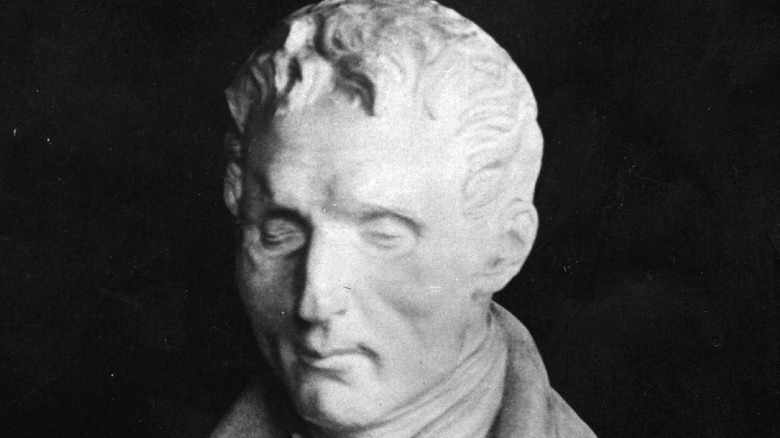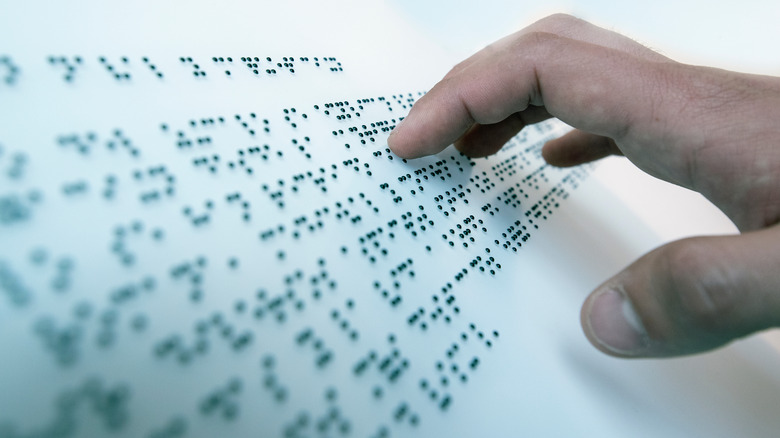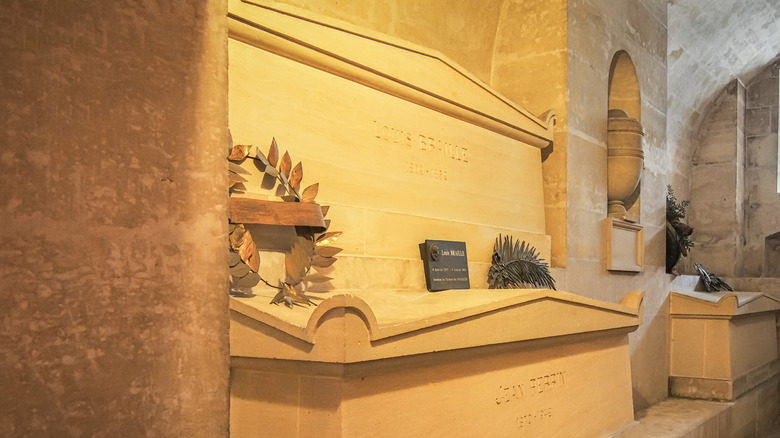The Truth About The Kid Who Invented Braille
In 1812, Louis Braille was playing with a tool in his father's harness shop when an accident occurred (via Paths to Literacy). Braille had tried to use a tool to punch a hole in a piece of leather. Instead, the tool slipped and ended up in his left eye, causing an infection that led to the complete loss of his vision. Becoming blind did not prevent Braille from becoming a student. He couldn't read or write, but he still learned and excelled. Per Biography, at the age of 10, Braille received a scholarship for the National Institute for Blind Youth in Paris.
What Braille really wanted to do, though, was read. Here, he learned that there was a way for him to do this. However, this system, which consisted of tracing a finger along raised letters, was an incredibly slow process (via Gizmodo). The books were massive and heavy (one sentence could take up a whole page). Simply put, this system was inconvenient and difficult to master. Then a guest speaker, Charles Barbier, came to the school and changed Braille's life forever (per the National Braille Press).
Braille was based on a military system
According to Paths to Literacy, Barbier was a retired French army captain. He had been tasked by Napoleon to create a writing system the military could use at night without making any sound (via Gizmodo). Using a pointy tool, he would punch dots and dashes into a thick piece of paper. These dots and dashes represented sounds that could be read in the dark in silence. Soldiers found this system too difficult to use. So much so, that the military passed on it. Barbier, however, thought that the blind could find it useful, thus his appearance at the National Institute for Blind Youth.
Braille was impressed with Barbier's presentation and decided to revamp the system as many of the students also found it too complex. Per Biography, he experimented for three years, from the ages of 12 to 15, until he had created a new and improved version. Braille's system had only six dots and a total of 64 symbols. His classmates quickly adopted the system, and Braille became a teacher by the age of 24.
Braille was not widely accepted
Per Gizmodo, the headmaster of the National Institute for Blind Youth encouraged the students to use Louis Braille's system. But Braille dreamed big; he wanted it to be available to every blind person. He began to copy books into his code and created symbols for blind musicians to be able to read and write music (via Paths to Literacy). He eventually also published a book on how to use his code.
In 1834, Braille went to the Exhibition of Industry in Paris to demonstrate the system in order to spread its awareness. Although the French king himself viewed the invention, he did not, to Braille's dismay, officially adopt the system for the blind. Even more disappointing, according to Biography, the National Institute for Blind Youth later banned Braille's system when a new headmaster was appointed.
Around the same time, his health grew worse, and he was diagnosed with tuberculosis. In 1852, Braille died at the age of 43. Two years later, his system, which now bore his name, was officially adopted by the French government. By the 20th century, most of the world was using Braille as the primary reading and writing system for the blind.


